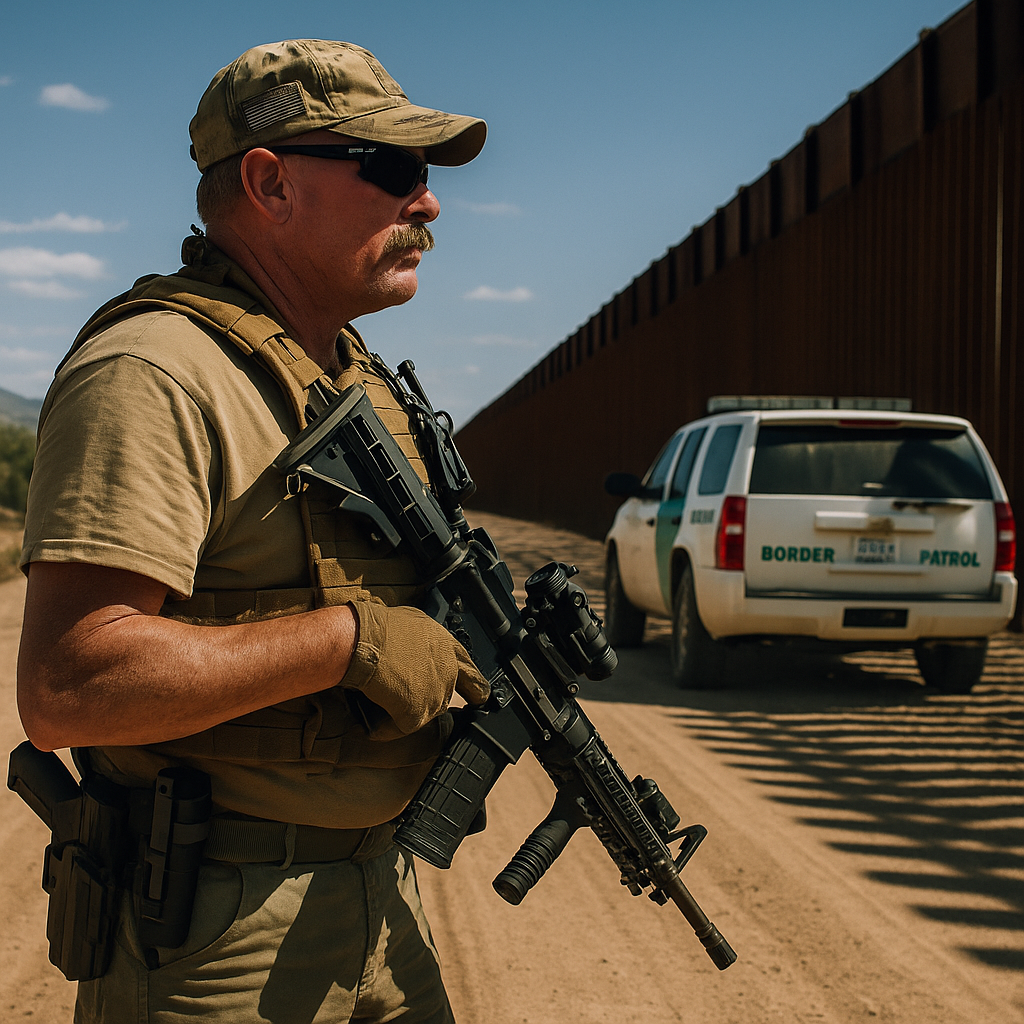From Vigilantes to Raids: How Trump’s Second Term Transformed the U.S. Border
The U.S. border, has become the frontline of former Trump’s renewed war on illegal immigration. As his second term unfolds, a deeply volatile strategy has taken root: a militarized border stance reinforced by vigilantes, mass deportations, and an unapologetically hardline message.-Rafael Benavente

Inside Trump's Border Crackdown: Vigilantes, Deportations, and a Divided America
In the dust-choked valleys of Arizona’s Sonoran Desert, a battle is unfolding—not just between nations or ideologies, but over the very definition of American identity. The southern U.S. border, particularly in Arizona, has become the frontline of former President Donald Trump’s renewed war on illegal immigration. As his second term unfolds, a deeply controversial and volatile strategy has taken root: a militarized border stance reinforced by paramilitary vigilantes, mass deportations, and an unapologetically hardline message.
One such vigilante is Tim, a self-proclaimed patriot and ex-soldier who now roams a 26-mile gap in the border wall. Tim is no longer just a private citizen; he embodies a growing sentiment in America that the government isn’t doing enough—and that it’s up to the people to take matters into their own hands. With heavy weapons strapped to his chest, Tim prowls the desert for migrants he claims are tied to cartels. But his stance extends well beyond national security. For Tim, this is cultural warfare.
“They don’t want to be citizens,” he claims, referring to migrants from South and Central America. “They just want the benefits.”
That mindset starkly contrasts with how he views other immigrants—such as white South African farmers—who he insists will “be productive” and are welcomed because they wave American flags. This contrast reveals more than just political ideology; it exposes deep questions about race, class, and the kind of America that some are trying to preserve.
A Second-Term Agenda of Expulsion
Trump’s second term isn’t focused on building walls—it’s about filling buses. His administration has drastically expanded the scope and scale of deportation efforts. In the first 100 days alone, Immigration and Customs Enforcement (ICE) reported over 66,000 arrests and more than 65,000 deportations.
This surge didn’t come from new legislation. As one sheriff put it plainly: “The laws didn’t change. But enforcement did.” In many areas, border crossings have dropped by 90%, and communities along the border report quieter days and fewer chases. Supporters see this as long-overdue action, a fulfillment of Trump’s 2016 and 2024 promises. Critics, however, see a growing state of fear.
Fear Among the Law-Abiding
One of those critics is Tatiana, a Colombian woman who has lived legally in Arizona for over a decade. Her stepfather, an undocumented immigrant who came to the U.S. at age 16 and is now 65, lives in silence and fear. Though he has no criminal record, he’s terrified that any interaction with law enforcement could mean deportation to a country he no longer knows.
“Right now, it doesn’t matter if you are good or bad,” Tatiana says. “They just have the option of deportation. That’s it.”
The crackdown has created a chilling effect in immigrant communities across the nation. Many fear leaving their homes, traveling, or even going to work. The American Dream, for many, now comes with an asterisk: you may be next.
The Border as a Battlefield
The imagery at the Arizona-Mexico border paints a surreal picture. Passport fragments from Sri Lanka, India, and Bangladesh scatter the sand. Migrants are no longer just Latin American—they are global. According to Tim, this proves that criminal networks are using Arizona’s porous gaps to traffic people from all over the world. To others, it illustrates how desperate people are to reach a better life, no matter the cost or origin.
But while Tim and his group Arizona Border Recon patrol with AR-15s and thermal scopes, others take a different approach. Humanitarian groups have been leaving water and food in the desert, trying to prevent needless deaths from dehydration. Their actions have also drawn controversy, with critics accusing them of encouraging illegal immigration.
One volunteer nurse explains: “People don’t come for a bottle of water and a can of Vienna sausages. They walk for days through dangerous terrain. They come for survival.”
That survival is increasingly difficult to achieve. Even basic humanitarian gestures are met with hostility. In one unsettling scene, Tim mocks an elderly nun offering aid, even making a sexualized comment toward her. His message is clear: he doesn’t see her actions as compassionate. He sees them as betrayal.
Mainstreaming Extremism
Tim’s dream isn’t just to guard the border—it’s to be funded by the government to do it. And under Trump’s second term, that dream may become reality. As Tim says himself: “If you find the right person to get into Trump’s ear, there’s always a chance.” That chance has been increasing, as vigilante views move from fringe forums into mainstream policy discussions.
The line between federal law enforcement and civilian border patrol groups is growing blurrier. Some local officials express gratitude to people like Tim, while others keep their distance. But the cultural tide is shifting. What was once considered extreme is now echoed in Washington.
“I already feel legitimate,” Tim declares. “Now I just want to be officially legitimized.”
The Price of Security
From ICE raids uploaded proudly by government agencies, to vigilante patrols livestreamed for social media, the border has become more than a line between two countries. It’s a symbol—a stage where different visions of America collide.
To Trump supporters, this is necessary national protection. To many immigrants and their allies, it is an American nightmare.
The legal distinction between documented and undocumented immigrants is being eclipsed by a cultural one—those who are perceived to “belong” and those who do not. For people like Tatiana’s stepfather, decades of peaceful living in the U.S. don’t offer protection. Only papers do.
Meanwhile, the desert heat rises, the walls are manned by men with scopes and rifles, and the shadows remain filled with the voiceless.
Conclusion: Where Do We Go From Here?
The story captured in this video isn't just about immigration enforcement—it's about the soul of the nation. As vigilante groups seek federal endorsement and raids sweep through once-safe neighborhoods, America stands at a crossroads between law and empathy, nationalism and humanitarianism.
The choices made today will not only shape immigration policy but define what kind of country America wants to be in the eyes of its citizens—and the world.
Credit: This article is based on the YouTube video “Trump’s Border Patrols | 2025 Documentary” published by Channel 4 News. All reporting, footage, and interviews are the property of the original creators.
